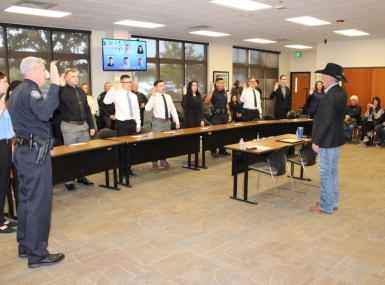Increase Funding for the Second Chance Act to Support Local Reentry Programs that Reduce Recidivism Among Formerly Incarcerated Individuals

Author

Brett Mattson
Upcoming Events
Related News
Action Needed
Urge your members of Congress to support the reauthorization of the Second Chance Act and increase funding for these programs in the annual appropriations process. The bipartisan Second Chance Act provides resources to states, local governments and nonprofit organizations to improve outcomes for people returning to communities from prisons, jails and juvenile facilities.
Background
Enacted in 2008, the Second Chance Act (P.L. 110-199) authorizes federal grants that assist states, counties and nonprofit organizations in developing and implementing programs to help formerly incarcerated individuals successfully reintegrate into the community after their release from correctional facilities. Administered through the Office of Justice Programs at the U.S. Department of Justice (DOJ), Second Chance Act programs have helped numerous counties provide reentry services – like employment assistance, substance abuse and mental health treatment, housing, family-center programming and mentoring – to adults and juveniles returning to the community from prisons or jails.
Since its establishment, the Second Chance Act has funded more than 1,100 grants to state and local governments and nonprofit organizations, and more than a third of these grants have been awarded to counties. These investments in reentry programs have proven effective in helping individuals successfully reintegrate into their communities. Successful reintegration results in lower rates of recidivism, which improves public safety and provides significant savings to counties, who collectively spend $124 billion each year on criminal justice.
As Congress considers funding for a variety of federal programs and thousands of formerly incarcerated individuals return to their communities, the Second Chance Act should be prioritized in the annual appropriations process. In FY 2024/2025, the program was funded at $117 million – a decrease of $8 million from FY 2023 levels. Congress should maintain at least this level of funding in FY 2026.
Key Talking Points
- Counties spend more than $124 billion each year on criminal justice and more than $193 billion on health and human services.
- According to the U.S. Bureau of Justice Statistics, there are more than 7 million individuals admitted to jails each year. Of that number, only about six percent of jail admissions result in prison sentences – in other words, 94 percent of jail detainees and inmates return directly to the community from jail.
- The Second Chance Act improves the coordination of reentry services and policies at the state, local and tribal levels, and provides financial assistance for local programs that provide employment training, mentoring, substance abuse and mental health treatment and other family-centered services to formerly incarcerated individuals.
- Since 2009, more than one out of three Second Chance Act awards have gone to county governments. From the onset, over $600 million has been awarded to state, local, tribal and nonprofit reentry programs under the Second Chance Act. Since 2015, $47 million has gone directly to county governments.
Advocacy
Congress advances Second Chance Act reauthorization
On December 4, the Senate passed the Second Chance Reauthorization Act (S.4477) by unanimous consent, a major milestone for supporting county reentry programs. NACo supports this legislation, which would reauthorize funding for Second Chance Act programs for five years.

Related News

CMS requires state Medicaid suspension upon arrest versus termination
Effective January 1, 2026, federal law now requires states to suspend, rather than terminate, Medicaid coverage when an individual is incarcerated.

ICE hiring surge challenges county law enforcement
Local governments hope that their law enforcement personnel will favor the familiarity of the communities they serve when weighing potentially lucrative immigration enforcement recruitment bonuses, which may require them to uproot their lives.

County officials moonlight in search and rescue roles
For some county officials, participating in search and rescue operations is another way to serve their communities, and make it safer for people to enjoy natural recreation resources.